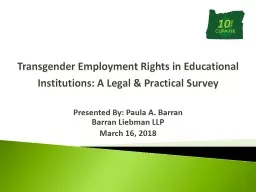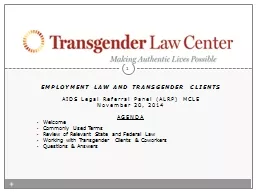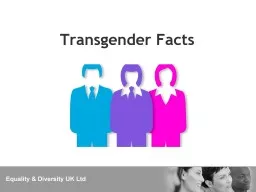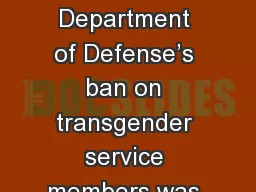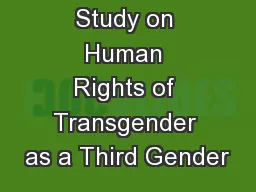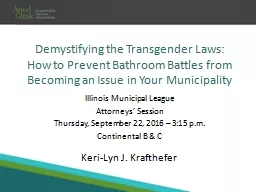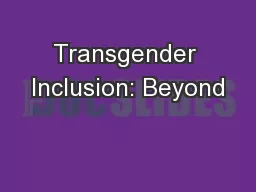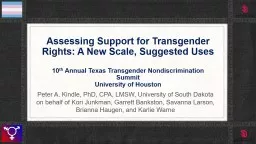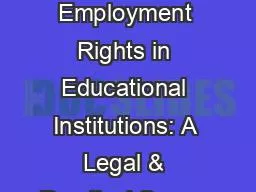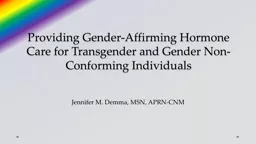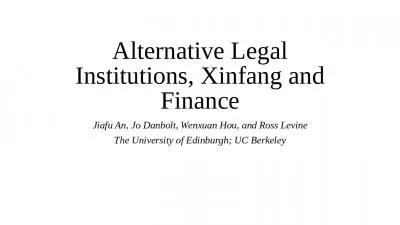PPT-Transgender Employment Rights in Educational Institutions: A Legal & Practical Survey
Author : stefany-barnette | Published Date : 2018-10-31
Presented By Paula A Barran Barran Liebman LLP March 16 2018 It seems unlikely that our society can continue to condone a legal structure in which employees can
Presentation Embed Code
Download Presentation
Download Presentation The PPT/PDF document "Transgender Employment Rights in Educati..." is the property of its rightful owner. Permission is granted to download and print the materials on this website for personal, non-commercial use only, and to display it on your personal computer provided you do not modify the materials and that you retain all copyright notices contained in the materials. By downloading content from our website, you accept the terms of this agreement.
Transgender Employment Rights in Educational Institutions: A Legal & Practical Survey: Transcript
Download Rules Of Document
"Transgender Employment Rights in Educational Institutions: A Legal & Practical Survey"The content belongs to its owner. You may download and print it for personal use, without modification, and keep all copyright notices. By downloading, you agree to these terms.
Related Documents

